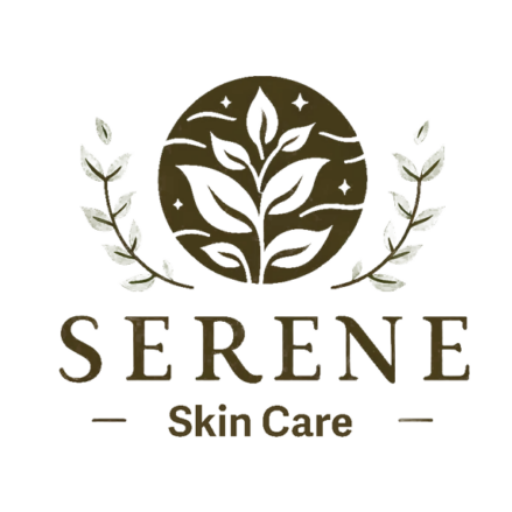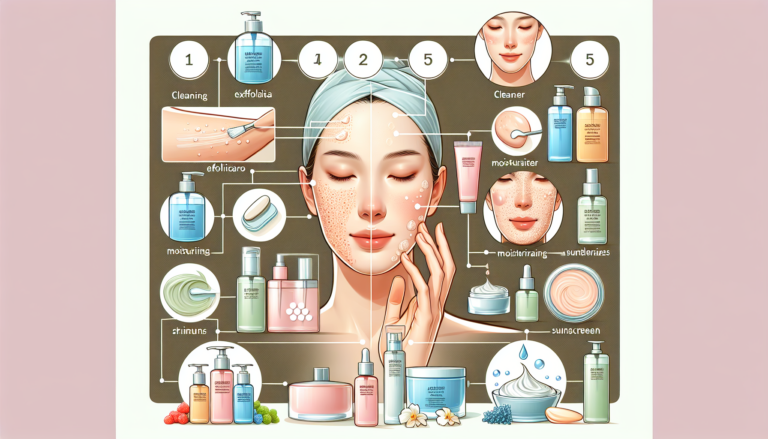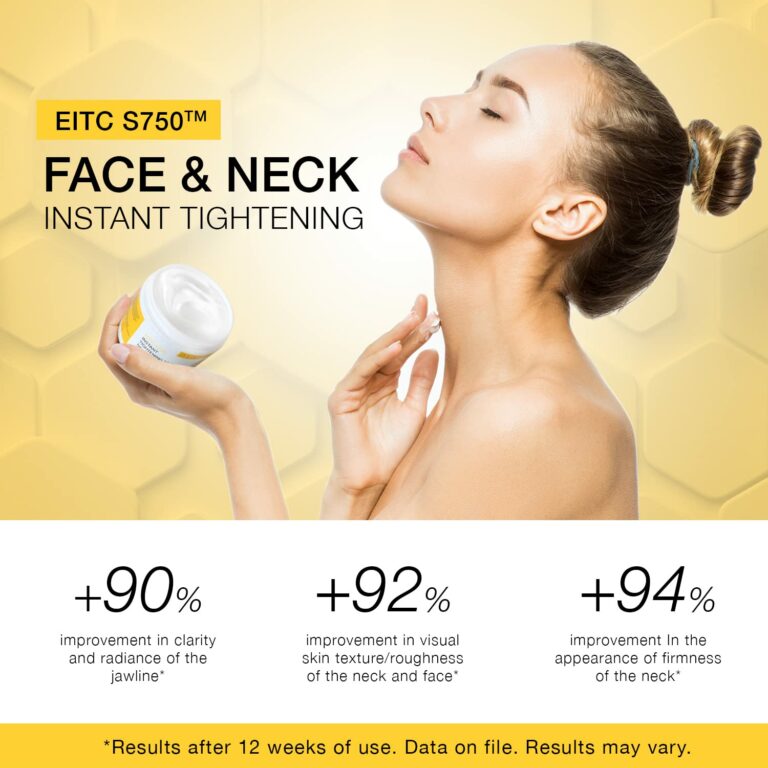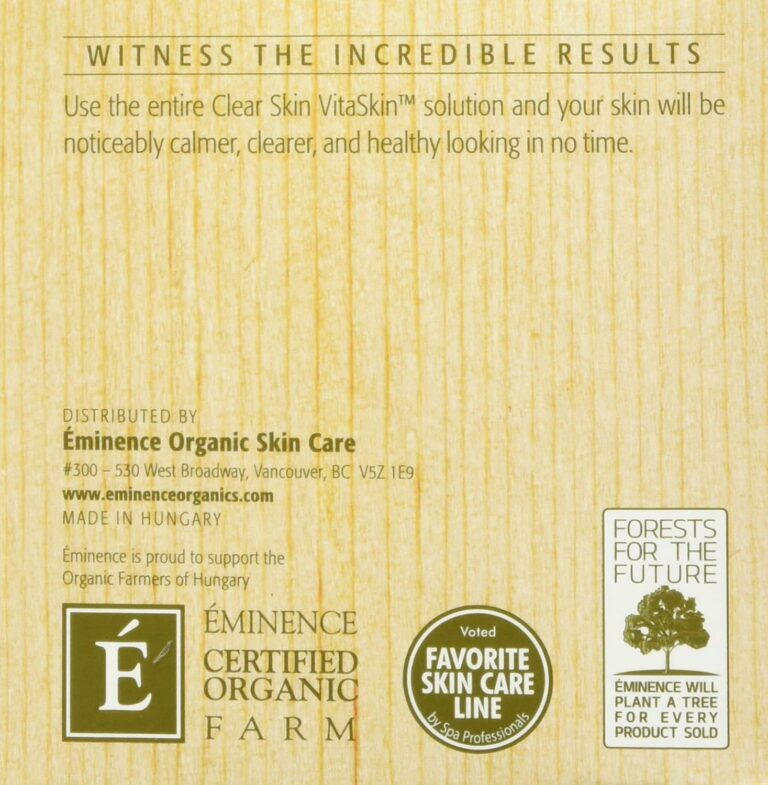In the ever-changing world of skincare, adapting your routine to the different climates can be the key to maintaining a healthy and glowing complexion. From sweltering heat to icy cold temperatures, each climate brings its own set of challenges for your skin. This article explores the importance of tailoring your skincare routine to the specific climate you are in, providing helpful tips to keep your skin looking its best no matter the weather. Whether you live in a tropical paradise or endure frigid winters, this article has you covered with expert advice on adapting your skincare routine to the elements.
Understanding Your Skin
Every person’s skin is unique, and understanding your skin type is crucial in developing an effective skincare routine. There are generally four main skin types: oily, dry, combination, and normal. Identifying your skin type will help you choose the right products and adjust your skincare routine accordingly.
Identifying your skin type
To determine your skin type, there are a few key signs to look out for.
- Oily skin tends to have a shiny appearance, especially in the T-zone (forehead, nose, and chin). It is prone to acne and blemishes.
- Dry skin often feels tight, itchy, and flaky. It may appear dull and lack moisture.
- Combination skin has both oily and dry areas. The T-zone tends to be oily, while the cheeks and other areas may be dry.
- Normal skin is well-balanced, neither too oily nor too dry. It has a smooth texture and minimal imperfections.
Understanding your skin type is the first step in customizing your skincare routine to meet its unique needs.
Understanding the importance of climate on your skin
Another vital factor to consider when developing a skincare routine is the climate you live in. Different climates can have various effects on your skin, which may require adjustments to your routine and the products you use. Let’s explore how different climates can impact the skin and how to adapt accordingly.
Hot and Humid Climate
Hot and humid climates can present unique challenges to the skin due to the increased heat and moisture in the air.
Effects of hot and humid climate on the skin
In hot and humid climates, the skin tends to produce more sweat and oil. This can result in clogged pores, excessive sebum production, and an increased likelihood of breakouts. Additionally, the humidity can lead to increased water loss from the skin, leaving it dehydrated and dull.
Adjusting your skincare routine for hot and humid climates
To combat the effects of a hot and humid climate, it is essential to focus on oil control and hydration. Here are a few adjustments you can make to your skincare routine:
- Cleanse your face twice a day with a gentle, oil-free cleanser to remove excess oil and impurities.
- Use an oil-free moisturizer that is lightweight yet hydrating to replenish moisture without clogging pores.
- Incorporate regular exfoliation to unclog pores and remove dead skin cells. Opt for chemical exfoliants like AHAs or BHAs.
- Apply a broad-spectrum sunscreen with a high SPF to protect your skin from the sun’s harmful rays.
- Consider using a mattifying primer or a setting powder to help control shine throughout the day.
Recommended products for hot and humid climates
When selecting skincare products for hot and humid climates, look for those specifically formulated for oily or combination skin. Here are some product recommendations:
- Oil-free cleansers, such as Neutrogena Oil-Free Acne Wash or CeraVe Foaming Facial Cleanser, help remove excess oil without stripping the skin.
- Lightweight gel moisturizers like the Neutrogena Hydro Boost Gel-Cream or the Belif The True Cream Aqua Bomb provide hydration without feeling heavy on the skin.
- Chemical exfoliants like the Paula’s Choice Skin Perfecting 2% BHA Liquid or the COSRX AHA/BHA Clarifying Treatment Toner can effectively unclog pores and improve skin texture.
- Sunscreens that offer broad-spectrum protection and have a lightweight, non-greasy formula, such as the La Roche-Posay Anthelios Clear Skin Dry Touch Sunscreen SPF 60 or the EltaMD UV Clear Facial Sunscreen SPF 46, are ideal for hot and humid climates.
- For mattifying options, try the Benefit POREfessional Primer or the Innisfree No-Sebum Mineral Powder to control oil and shine.
Dry and Cold Climate
Dry and cold climates can wreak havoc on the skin, leading to dryness, flakiness, and even cracks in extreme cases.
Effects of dry and cold climate on the skin
In dry and cold climates, the lack of humidity and exposure to harsh winds can strip the skin of its natural moisture. This can result in dryness, tightness, redness, and an increased likelihood of sensitivity or irritation.
Adjusting your skincare routine for dry and cold climates
To combat the effects of a dry and cold climate, it is essential to focus on hydrating and protecting the skin. Here are a few adjustments you can make to your skincare routine:
- Use a gentle, moisturizing cleanser to cleanse your face without further drying out the skin.
- Opt for richer, emollient moisturizers that provide long-lasting hydration and create a protective barrier against harsh weather conditions.
- Incorporate a hydrating serum or facial oil into your routine to boost moisture and nourishment.
- Consider using a humidifier indoors to add moisture to the air and prevent excessive drying of the skin.
- Protect your skin from the elements by wearing a scarf, hat, and gloves when going outside and applying a broad-spectrum sunscreen with a high SPF.
Recommended products for dry and cold climates
When selecting skincare products for dry and cold climates, look for those specifically formulated for dry or sensitive skin. Here are some product recommendations:
- Gentle cleansers like Cetaphil Gentle Skin Cleanser or La Roche-Posay Toleriane Hydrating Gentle Cleanser effectively cleanse without stripping the skin of its natural oils.
- Rich moisturizers such as the CeraVe Moisturizing Cream or the Dr. Jart+ Ceramidin Cream provide intense hydration and nourishment to combat dryness.
- Hydrating serums like the The Ordinary Hyaluronic Acid 2% + B5 or the Drunk Elephant B-Hydra Intensive Hydration Serum can help replenish moisture and plump the skin.
- Facial oils such as the Josie Maran 100% Pure Argan Oil or the Sunday Riley Juno Antioxidant + Superfood Face Oil provide additional moisture and nourishment.
- Sunscreens that offer both UVA and UVB protection, such as the La Roche-Posay Anthelios Face Moisturizer SPF 30 or the Supergoop! Unseen Sunscreen SPF 40, are essential to shield the skin from harmful UV rays.
Tropical Climate
Tropical climates are characterized by high temperatures, humidity, and often intense sunlight. The effects of such climates can pose unique challenges to the skin.
Effects of tropical climate on the skin
In tropical climates, the heat and humidity can lead to excessive sweating, increased oil production, and a higher risk of clogged pores and breakouts. The intense sun exposure can also contribute to sun damage and pigmentation issues.
Adjusting your skincare routine for tropical climates
To combat the effects of a tropical climate, it is crucial to focus on oil control, hydration, and sun protection. Here are a few adjustments you can make to your skincare routine:
- Cleanse your face twice a day with a gentle, oil-free cleanser to remove sweat, excess oil, and impurities.
- Use lightweight, oil-free moisturizers or hydrating gels to provide adequate hydration without causing additional oiliness.
- Incorporate a lightweight, non-comedogenic sunscreen into your daily routine to protect your skin from the harmful UV rays.
- Consider using oil-absorbing sheets throughout the day to control shine and excess oil.
- Opt for water-resistant or waterproof makeup products to withstand the tropical climate’s humidity.
Recommended products for tropical climates
When selecting skincare products for tropical climates, look for lightweight, oil-free, and non-comedogenic formulas. Here are some product recommendations:
- Oil-free cleansers like the CeraVe Foaming Facial Cleanser or the Bioderma Sebium Foaming Gel effectively remove sweat, excess oil, and impurities.
- Lightweight moisturizers such as the Neutrogena Hydro Boost Water Gel or the Laneige Water Bank Moisture Cream provide hydration without feeling heavy on the skin.
- Non-comedogenic sunscreens like the EltaMD UV Clear Facial Sunscreen SPF 46 or the Biore UV Aqua Rich Watery Essence SPF 50+ effectively protect the skin without clogging pores.
- Oil-absorbing sheets, like the Clean & Clear Oil Absorbing Sheets or the Palladio Rice Paper, help control shine throughout the day.
- Water-resistant or waterproof makeup products, such as the Maybelline Fit Me Matte + Poreless Foundation or the L’Oreal Voluminous Lash Paradise Waterproof Mascara, can withstand the tropical climate’s humidity.
Arctic Climate
Arctic climates are characterized by extremely cold temperatures, low humidity, and harsh winds. These conditions can have a significant impact on the skin.
Effects of arctic climate on the skin
In arctic climates, the harsh cold, low humidity, and biting winds can strip the skin of its natural oils and cause extreme dryness. This can lead to chapped, cracked, and rough skin.
Adjusting your skincare routine for arctic climates
To combat the effects of an arctic climate, it is crucial to focus on intense hydration, protection, and nourishment. Here are a few adjustments you can make to your skincare routine:
- Use a gentle, moisturizing cleanser to cleanse your face without further drying out the skin.
- Opt for richer, heavier moisturizers that provide deep hydration and create a protective barrier against the harsh climate.
- Incorporate a nourishing facial oil or occlusive balm into your routine to lock in moisture and protect the skin from wind and cold.
- Limit exposure to extremely low temperatures and wind by wearing protective clothing and covering your face with scarves or balaclavas.
- Apply a broad-spectrum sunscreen with a high SPF to protect your skin from the sun’s UV rays, which can still be harmful in arctic regions.
Recommended products for arctic climates
When selecting skincare products for arctic climates, look for those specifically formulated for dry or damaged skin. Here are some product recommendations:
- Gentle, moisturizing cleansers like the CeraVe Hydrating Facial Cleanser or the La Roche-Posay Toleriane Hydrating Gentle Cleanser effectively cleanse without drying out the skin.
- Rich, heavy moisturizers such as the Weleda Skin Food or the First Aid Beauty Ultra Repair Cream provide intense hydration and protection against extreme dryness.
- Facial oils like the The Ordinary 100% Cold-Pressed Virgin Marula Oil or the Pai Rosehip BioRegenerate Oil help nourish and replenish the skin’s natural barrier.
- Occlusive balms such as the Aquaphor Healing Ointment or the La Roche-Posay Cicaplast Baume B5 can provide a protective layer to prevent moisture loss in extreme conditions.
- Sunscreens with a high SPF and moisturizing properties, like the EltaMD UV Replenish Broad-Spectrum SPF 44 or the Vanicream Sunscreen Sport SPF 35, offer crucial protection in arctic regions.
Mediterranean Climate
Mediterranean climates are characterized by warm, dry summers and mild, rainy winters. The effects of such climates can have specific impacts on the skin.
Effects of Mediterranean climate on the skin
In Mediterranean climates, the combination of warm, sunny summers and mild, rainy winters can lead to increased sun exposure and variable humidity levels. These factors can contribute to sun damage, dehydration, and uneven skin tone.
Adjusting your skincare routine for Mediterranean climates
To combat the effects of a Mediterranean climate, it is crucial to focus on sun protection, hydration, and maintaining an even skin tone. Here are a few adjustments you can make to your skincare routine:
- Cleanse your face twice a day with a gentle cleanser to remove impurities and excess oil.
- Use lightweight, non-greasy moisturizers that provide hydration without clogging pores.
- Incorporate a vitamin C serum into your routine to help brighten the skin and protect against sun damage.
- Apply a broad-spectrum sunscreen with a high SPF daily to shield your skin from harmful UV rays.
- Consider using a lightweight, tinted moisturizer or BB cream for a natural, even skin tone.
Recommended products for Mediterranean climates
When selecting skincare products for Mediterranean climates, look for lightweight, hydrating formulas with sun protection. Here are some product recommendations:
- Gentle cleansers like the Cetaphil Daily Facial Cleanser or the La Roche-Posay Effaclar Purifying Foaming Gel effectively cleanse the skin without stripping its natural oils.
- Lightweight moisturizers such as the Clinique Dramatically Different Moisturizing Gel or the Kiehl’s Ultra Facial Oil-Free Gel Cream provide hydration without feeling heavy on the skin.
- Vitamin C serums like the Ole Henriksen Truth Serum or the Skinceuticals C E Ferulic Serum help brighten the skin and protect against sun damage.
- Broad-spectrum sunscreens that are lightweight and non-greasy, such as the La Roche-Posay Anthelios Melt-In Milk Sunscreen SPF 60 or the Supergoop! Daily Correct CC Cream SPF 35, are essential for everyday sun protection.
- Tinted moisturizers or BB creams with SPF, like the IT Cosmetics CC+ Cream with SPF 50+ or the Maybelline Dream Fresh BB Cream, provide both sun protection and coverage for an even skin tone.
Subtropical Climate
Subtropical climates are characterized by hot, humid summers and mild winters. The effects of such climates can pose specific challenges to the skin.
Effects of subtropical climate on the skin
In subtropical climates, the high humidity and heat can lead to increased sweat and oil production, clogged pores, and breakouts. Additionally, the intense sun exposure can contribute to sun damage and hyperpigmentation.
Adjusting your skincare routine for subtropical climates
To combat the effects of a subtropical climate, it is essential to focus on oil control, hydration, and sun protection. Here are a few adjustments you can make to your skincare routine:
- Cleanse your face twice a day with a gentle, oil-free cleanser to remove sweat, excess oil, and impurities.
- Use lightweight, oil-free moisturizers or hydrating gels to provide hydration without clogging pores.
- Incorporate ingredients like salicylic acid or tea tree oil to help control oil and prevent breakouts.
- Apply a broad-spectrum sunscreen with a high SPF to protect your skin from the intense sun exposure.
- Consider using blotting papers throughout the day to absorb excess oil without disturbing your makeup.
Recommended products for subtropical climates
When selecting skincare products for subtropical climates, look for lightweight, oil-free, and non-comedogenic formulas. Here are some product recommendations:
- Oil-free cleansers like the Neutrogena Oil-Free Acne Wash or the CeraVe Foaming Facial Cleanser effectively remove sweat, excess oil, and impurities.
- Lightweight moisturizers such as the Dr. Jart+ Water Drop Hydrating Moisturizer or the Dermalogica Active Moist provide hydration without feeling heavy on the skin.
- Products containing salicylic acid, like the Paula’s Choice Skin Perfecting 2% BHA Liquid or the La Roche-Posay Effaclar Duo Dual Action Acne Treatment, can help control oil and prevent breakouts.
- Broad-spectrum sunscreens that are lightweight and non-greasy, such as the EltaMD UV Clear Facial Sunscreen SPF 46 or the Supergoop! Unseen Sunscreen SPF 40, are essential for sun protection.
- Blotting papers, like the NYX Professional Makeup Blotting Paper or the Clean & Clear Oil Absorbing Sheets, can effectively remove excess oil throughout the day without disturbing makeup.
Desert Climate
Desert climates are characterized by extreme heat, low humidity, and high levels of sun exposure. These conditions can have a significant impact on the skin.
Effects of desert climate on the skin
In desert climates, the intense heat, dryness, and exposure to the sun can lead to extreme dehydration, sunburn, and an increased likelihood of fine lines and wrinkles.
Adjusting your skincare routine for desert climates
To combat the effects of a desert climate, it is crucial to focus on intense hydration, sun protection, and rejuvenation. Here are a few adjustments you can make to your skincare routine:
- Cleanse your face twice a day with a gentle cleanser to remove impurities without further drying out the skin.
- Opt for lightweight, non-greasy moisturizers that provide intense hydration and create a barrier against moisture loss.
- Incorporate a hydrating face mask or a facial mist into your routine to replenish moisture throughout the day.
- Apply a broad-spectrum sunscreen with a high SPF and seek shade during the sun’s peak hours to protect your skin from intense sun exposure.
- Consider incorporating anti-aging ingredients like retinol or hyaluronic acid to combat the signs of premature aging caused by the harsh desert climate.
Recommended products for desert climates
When selecting skincare products for desert climates, look for lightweight yet hydrating formulas and potent sunscreens. Here are some product recommendations:
- Gentle cleansers like the Cetaphil Gentle Skin Cleanser or the First Aid Beauty Face Cleanser effectively cleanse without stripping the skin’s natural oils.
- Lightweight moisturizers such as the Drunk Elephant Lala Retro Whipped Cream or the Clinique Moisture Surge 72-Hour Auto-Replenishing Hydrator provide intense hydration without feeling heavy on the skin.
- Hydrating face masks like the Laneige Water Sleeping Mask or the Origins Drink Up Intensive Overnight Mask can boost moisture levels and rejuvenate the skin.
- Broad-spectrum sunscreens that are lightweight, non-greasy, and have a high SPF, such as the La Roche-Posay Anthelios Ultra-Light Fluid Facial Sunscreen SPF 60 or the Supergoop! Everyday Sunscreen SPF 50, are essential for desert climates.
- Products containing anti-aging ingredients like retinol, such as the Sunday Riley A+ High-Dose Retinoid Serum or the RoC Retinol Correxion Deep Wrinkle Serum, or hyaluronic acid, such as The Ordinary Hyaluronic Acid 2% + B5 or the Peter Thomas Roth Water Drench Hyaluronic Cloud Serum, can help combat the signs of premature aging.
Temperate Climate
Temperate climates are characterized by mild temperatures, moderate humidity, and varying weather conditions throughout the year. The effects of such climates can pose unique challenges to the skin.
Effects of temperate climate on the skin
In temperate climates, the changing seasons, fluctuations in humidity, and exposure to various weather conditions can impact the skin differently throughout the year. These factors can lead to dryness, sensitivity, and an increased risk of environmental damage.
Adjusting your skincare routine for temperate climates
To combat the effects of a temperate climate, it is crucial to focus on hydration, protection, and adaptability. Here are a few adjustments you can make to your skincare routine:
- Cleanse your face twice a day with a gentle cleanser to remove impurities and maintain a healthy balance.
- Use a moisturizer that adapts to your skin’s changing needs throughout the year. Opt for a lightweight formula in warmer months and a richer one in colder months.
- Incorporate antioxidants into your routine to protect your skin from environmental damage caused by varying weather conditions.
- Apply a broad-spectrum sunscreen with a suitable SPF for the current season to shield your skin from harmful UV rays.
- Consider using a hydrating toner or essence to provide an extra layer of hydration and nourishment.
Recommended products for temperate climates
When selecting skincare products for temperate climates, look for adaptable formulas and broad-spectrum sunscreens suitable for different seasons. Here are some product recommendations:
- Gentle cleansers like the CeraVe Hydrating Facial Cleanser or the Glossier Milky Jelly Cleanser effectively cleanse the skin without stripping its natural oils.
- Lightweight moisturizers such as the Neutrogena Hydro Boost Water Gel or the Belif The True Cream Aqua Bomb provide hydration without feeling heavy on the skin.
- Antioxidant serums like the SkinCeuticals C E Ferulic Serum or the Drunk Elephant C-Firma Day Serum can protect the skin from environmental damage caused by changing weather conditions.
- Broad-spectrum sunscreens with a suitable SPF for the current season, like the EltaMD UV Clear Facial Sunscreen SPF 46 or the La Roche-Posay Anthelios Melt-In Milk Sunscreen SPF 60, offer crucial protection throughout the year.
- Hydrating toners or essences, such as the Hada Labo Gokujyun Premium Hyaluronic Acid Lotion or the Fresh Rose Deep Hydration Facial Toner, can provide an additional layer of moisture and nourishment.
Equatorial Climate
Equatorial climates are characterized by high temperatures, humidity, and consistent tropical weather throughout the year. The effects of such climates can pose unique challenges to the skin.
Effects of equatorial climate on the skin
In equatorial climates, the constant high heat and humidity can lead to increased sweat and oil production, clogged pores, and a higher likelihood of breakouts. The intense sun exposure can also contribute to sun damage and hyperpigmentation.
Adjusting your skincare routine for equatorial climates
To combat the effects of an equatorial climate, it is essential to focus on oil control, hydration, and sun protection. Here are a few adjustments you can make to your skincare routine:
- Cleanse your face twice a day with a gentle, oil-free cleanser to remove sweat, excess oil, and impurities.
- Use lightweight, oil-free moisturizers or hydrating gels to provide adequate hydration without adding extra oil to the skin.
- Incorporate ingredients like salicylic acid or tea tree oil to help control oil and prevent breakouts.
- Apply a broad-spectrum sunscreen with a high SPF daily to protect your skin from intense sun exposure.
- Consider using blotting papers throughout the day to absorb excess oil without disturbing your makeup.
Recommended products for equatorial climates
When selecting skincare products for equatorial climates, look for lightweight, oil-free, and non-comedogenic formulas. Here are some product recommendations:
- Oil-free cleansers like the Neutrogena Oil-Free Acne Wash or the CeraVe Foaming Facial Cleanser effectively remove sweat, excess oil, and impurities.
- Lightweight moisturizers such as the Clinique Dramatically Different Moisturizing Gel or the Kiehl’s Ultra Facial Oil-Free Gel Cream provide hydration without feeling heavy on the skin.
- Products containing salicylic acid, like the Paula’s Choice Skin Perfecting 2% BHA Liquid or the La Roche-Posay Effaclar Duo Dual Action Acne Treatment, can help control oil and prevent breakouts.
- Broad-spectrum sunscreens that are lightweight and non-greasy, such as the La Roche-Posay Anthelios Melt-In Milk Sunscreen SPF 60 or the Supergoop! Unseen Sunscreen SPF 40, are essential for equatorial climates.
- Blotting papers, like the NYX Professional Makeup Blotting Paper or the Clean & Clear Oil Absorbing Sheets, can effectively remove excess oil throughout the day without disturbing makeup.
In conclusion, understanding your skin type and the effects of different climates on your skin is crucial in developing an effective skincare routine. By making adjustments according to your specific needs, you can ensure your skin remains healthy and radiant no matter the weather conditions. Remember to choose products suitable for your skin type and the climate you live in, and always prioritize hydration, sun protection, and adaptability. With the right skincare routine, you can confidently face any climate and maintain a healthy, glowing complexion.







